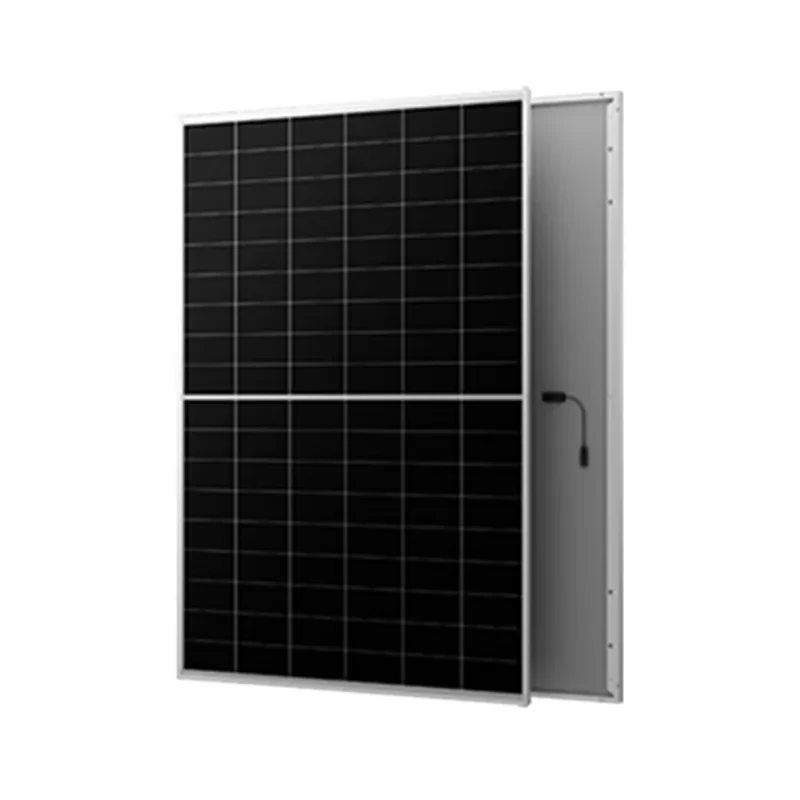High-Efficiency 400 Watt Bifacial Solar Panels for Enhanced Energy Production
The Rise of 400 Watt Bifacial Solar Panels A Solar Revolution
In recent years, the quest for sustainable energy solutions has intensified, leading to innovative advancements in solar technology. One of the most noteworthy developments in this field is the emergence of 400-watt bifacial solar panels. These panels are capturing the attention of both consumers and businesses alike, as they offer significant advantages over traditional solar technology.
Understanding Bifacial Solar Technology
Bifacial solar panels are distinct from conventional solar panels in that they are designed to capture sunlight from both sides. This technology utilizes a transparent back sheet or glass that allows light to penetrate through the back of the panel. As a result, bifacial panels can generate energy not only from direct sunlight on the front but also from reflected sunlight off surfaces like roofs, pavements, or even the ground beneath them. This capability significantly enhances their efficiency, especially in areas with high albedo, where surfaces reflect a considerable amount of light.
What Makes 400 Watt Bifacial Panels Stand Out?
The 400-watt capacity of these bifacial panels represents a significant advancement in the solar industry. Higher wattage translates to more energy generation from the same panel surface area, making them highly efficient. Compared to traditional panels, which often range from 250 to 350 watts, the 400-watt bifacial panels can deliver more power and thus maximize the return on investment for both residential and commercial users.
Increased Energy Yield
One of the primary benefits of bifacial solar panels is their increased energy yield. Studies have shown that bifacial panels can produce anywhere from 10% to 30% more energy than their monofacial counterparts, depending on the installation environment. For example, in snowy areas, the reflection of sunlight off the snow can significantly boost the productivity of bifacial panels. Similarly, installations on light-colored surfaces generate higher energy outputs as they reflect more sunlight.
Long-Term Durability and Cost Efficiency
400 watt bifacial solar panels

The durability of 400-watt bifacial solar panels is another compelling factor. Designed with robust materials and advanced engineering, these panels often come with longer warranties compared to traditional panels. This increased lifespan means less frequent replacements, reducing long-term operational costs. Moreover, while the initial investment may be higher, the increased energy output and longevity can lead to significant savings in electricity bills over time.
Environmental Impact
The environmental benefits of adopting bifacial solar panels are substantial. By harnessing more sunlight, these panels can contribute to a more significant reduction in carbon emissions. As societies move towards decarbonizing energy sources, increasing the efficiency of solar technologies like bifacial panels plays a critical role. The transition to more sustainable energy solutions not only helps mitigate climate change but also promotes energy independence and security.
Installation Flexibility
The versatility of bifacial solar panels extends to their installation options. These panels can be easily integrated into various solar projects, whether on rooftops, ground-mounted systems, or solar farms. Their capacity to generate energy from both sides allows for strategic placement that maximizes exposure to sunlight. Furthermore, they can be installed at various angles to capture the most energy throughout the day.
Conclusion Embracing the Future of Solar Energy
As the world continues to navigate the challenges posed by climate change and the need for renewable energy sources, 400-watt bifacial solar panels offer a glimpse into the future of solar technology. Their enhanced efficiency, durability, and ability to generate energy from multiple angles make them a compelling choice for anyone looking to invest in solar energy.
As individuals, businesses, and governments increasingly recognize the benefits of these advanced panels, the widespread adoption of bifacial solar technology could pave the way for a more sustainable energy landscape. The future of energy is bright, and bifacial solar panels are at the forefront of this revolution, proving that innovation can lead to a greener planet for generations to come.
-
String Solar Inverter: The High-Efficiency Solution for Smart Solar EnergyNewsJul.14,2025
-
Revolutionizing Rooftop Energy with the Power of the Micro Solar InverterNewsJul.14,2025
-
Power Independence with Smart Off Grid Solar Inverter SolutionsNewsJul.14,2025
-
On Grid Solar Inverter: Powering the Future with Smart Grid IntegrationNewsJul.14,2025
-
Monocrystalline Solar Panels: High-Efficiency Power for the Future of Clean EnergyNewsJul.14,2025
-
Bifacial Solar Panel: A Smarter Investment for Next-Generation Energy SystemsNewsJul.14,2025







